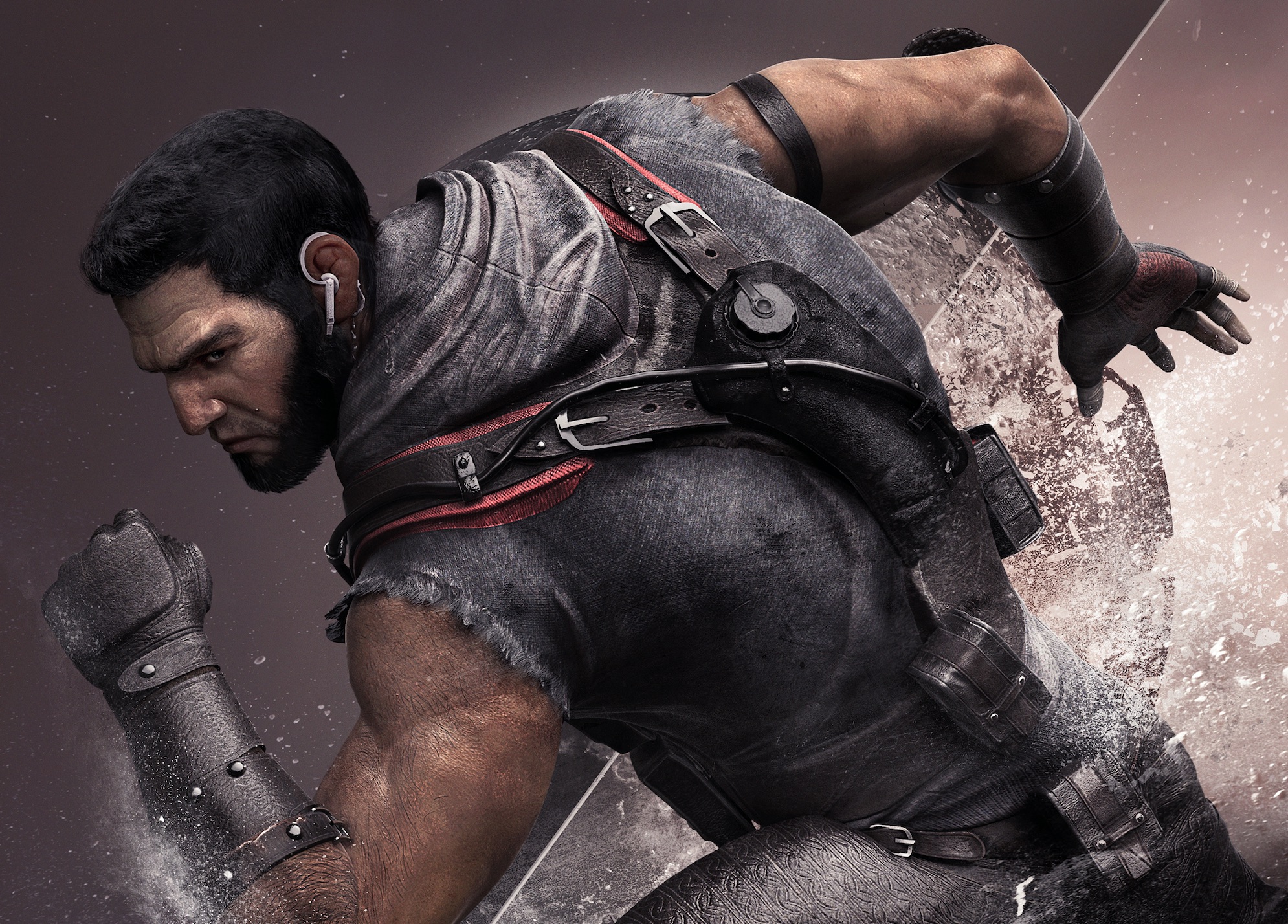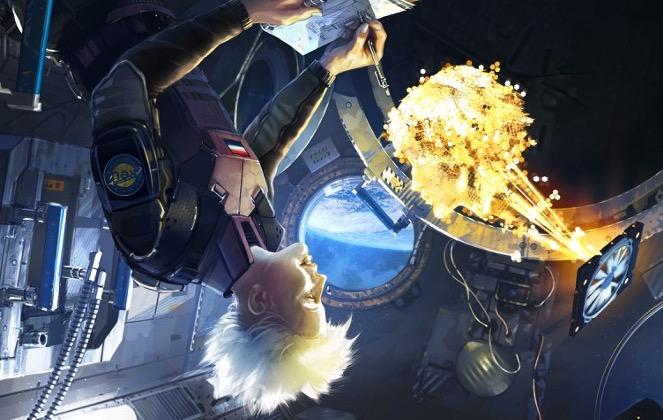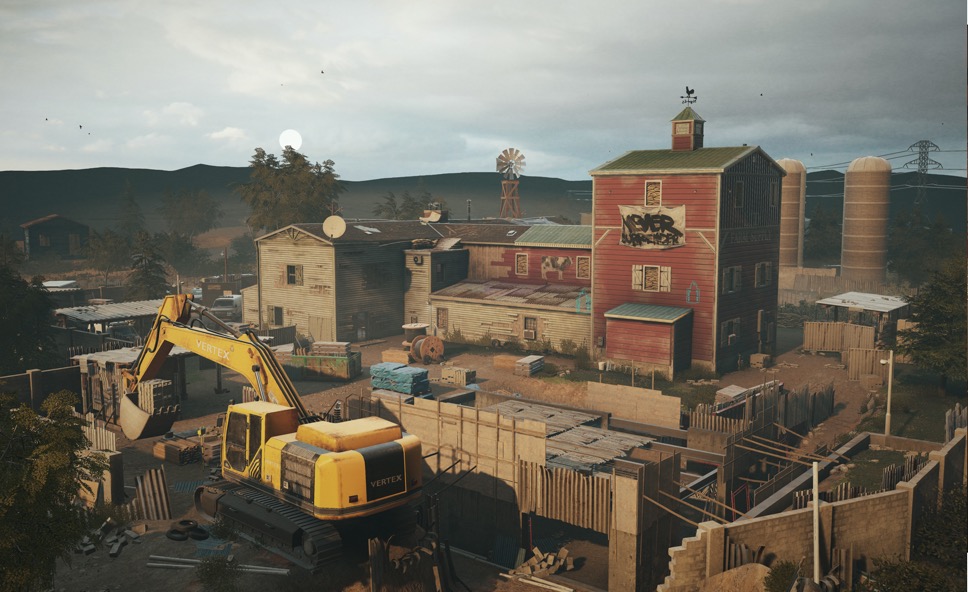Smashing through walls with Rainbow Six Siege’s new defender is unreasonably fun
Oryx and Iana bring destructive muscles and trickster holograms to Siege.

You know that moment in Rainbow Six Siege where you need to bust through a wall but don’t have a breaching charge? Oryx, the new defender of Operation Void Edge, doesn’t have that problem. Shrugging off most of the sci-fi gadgetry seen in Siege, Oryx breaches walls with nothing but his meaty juggernaut body.
Among Siege's roster of stealth and intel experts, Oryx stands out as an ultra aggressive roamer. He may lack the subtle footsteps of Caveira, but he shares her raw mobility. One press of his Remah Dash ability barrels through soft walls and leaves behind a hole equivalent to a breach charge. If enemies are unlucky enough to stand in the path of his charge, they’re shoved to the ground and left helpless for a few seconds, not unlike one of Nomad's Airjabs. It's hard to not feel like a total badass.
- Rainbow Six Siege Void Edge release date: everything we know
In addition to his dash, Oryx is the first defender that can climb up through hatches. The process is fluid and quiet enough to catch attackers by surprise. He can also choose to hang from the edge of a hatch and scout the room ahead. If it’s littered with traps, he can simply drop back down. In this facet he’s the opposite of Amaru, whose sluggish and noisy grappling hook often gets her killed.
Oryx’s climb isn’t the flashiest part of his kit, but I suspect it will prove his most useful. His crucial advantage over Amaru is his freedom to prep future flanking opportunities by opening hatches in the prep phase, potentially rewriting the meta in a significant way. Since he can creep up a hatch at any time, Nomad and Gridlock can’t just rely on staircase traps to shut down a flank.
Bursting through walls creates valuable rotations (who needs impact grenades?) and stirs confusion for attackers, but it has clear limitations. Oryx can bank three uses of his charge that replenish after a short cooldown, but charging through a wall always sets his count back to zero. Wall breaches also cost Oryx ten health, so you have to carefully consider when it’s worth using. And yes, you can absolutely headbutt a wall at low health and instantly die (of embarrassment). He’s also helpless to gunfire while dashing, so you can’t just charge into danger. He’s no melee operator—the Remah Dash is a short-range tool, not an attack.
Thankfully, Oryx can more than hold his own in a firefight. He’s the first 2-speed op that can take Doc and Rook’s MP5 SMG. The MP5 is a comfortable weapon for most Siege veterans, but it loses some bite—unlike his fellow defenders, Oryx cannot strap an ACOG sight to the MP5. His alternate is Valkyrie’s SPAS shotgun, a weapon so rarely used that I completely forgot it existed. In his secondary slots are the Bailiff 410 shotgun pistol and Jackal/Mira’s USP40 handgun. His loadout is balanced to ensure he can always have a shotgun in his pocket to open hatches. The SPAS is useful for opening rotation holes without spending health, but the MP5/Bailiff combo is the easy choice here.
Iana, the two-faced trickster

On the attacker side of Void Edge is Iana, a Dutch astronaut who brought fancy hologram tech back from space (who says NASA's wasting our money?). The 2-speed, 2-armor trickster can deploy her Gemini Replicator to materialize a perfect Iana clone and take control of it like a second operator for 15 seconds. Holo-Iana can move, sprint, vault, and aim down sights just like a real operator, though it can’t shoot, melee, or ping. It's Alibi 2.0 on attack, basically.
Keep up to date with the most important stories and the best deals, as picked by the PC Gamer team.
Think of the Gemini like a body-sized drone that works on a cooldown. It can be destroyed by a single bullet (though shooting it doesn’t ping your location like Alibi’s decoys). The hologram is great for general scouting, but its true power comes from the mind games you can play on enemies. Since Holo-Iana looks and sounds exactly like the real deal, you could, for example, fool defender ears with sounds of footsteps in Bank’s west lobby and then creep into the janitor closet instead. With some coordination, you could even bait out enemy peeks with the Gemini while a teammate covers the angle.
It’s a flexible gadget that grows more useful in dire circumstances. If Iana has already expended her normal drones, she always has a backup that can double as deception. There’s a wealth of potential in the Gemini, but it’s not meta-shifting. Like Alibi, Siege’s other hologram enthusiast, its effectiveness relies entirely on how cleverly it’s used. The ability to snuff it out with a single shot will limit its utility.
Even if you don’t bother with Iana’s trickster antics, her loadout can make an impression on the round. She chooses between Ash’s G36C or Nomad’s ARX2000, two great assault rifles with rival tradeoffs. The G36C is light on damage and low on recoil while the ARX deals a very high 47 damage per shot at the cost of a small magazine. You can’t go wrong with either, but Iana’s ARX has the benefit of a vertical grip, making it easier to control than Nomad’s version. Her kit is rounded out by frag grenades, which give her the extra utility and killing power that her Gemini lacks.
Oregon, reworked

Ubisoft tweaking one of its beloved maps is a nerve-wracking proposition, especially after the disastrous rework of Hereford Base. It’s impossible to get a complete picture of New Oregon after only a few hours playing it, but my gut says it’s changing for the better.
The most striking additions to Oregon’s layout are new hallways and rooms that give players more ways to navigate its unique L shape on the main floor. Ubisoft has spent a lot of time redesigning the basement site that was previously isolated from everything west of the main lobby.
Now, the white stairs extend down to a new basement corridor. It feels like the missing piece of a puzzle that unites the map and makes Basement less frustrating to attack and roam. To compensate for this, Oregon’s infamous laundry hatch has moved to a less central location. Tucked away to a corner, it’s no longer a death trap for defenders, but it’s also lost its tactical value as an all-seeing vantage point to hold while planting in Laundry.
Similarly, a new hallway adjacent to Meeting Hall connects Big Tower directly to Kitchen. This is a big deal, because first floor navigation used to require a trip through Meeting Hall and its trio of hatches (now there’s only two). The new hallway also enables a new site combo, Kitchen/Meeting Hall. There’s a lot of other changes in Oregon’s rework that I’m genuinely excited about, like an expanded attic that maintains its dual-sided soft walls while adding a door that links to Dorms and a new corridor that links Small Tower to Dining Hall.
I like what Ubisoft is doing, but something felt off as I was playing it. I couldn’t explain my gut feeling until I hopped through the big Dorms window I’ve been killed at hundreds of times, now blocked by a bunk bed that cuts off its hallway sightline: this is good, but it isn’t Oregon anymore.
Like the loved-and-lost, symmetrical halls of original Hereford Base, there’s an emptiness in knowing a map I love is going away. Sure, the new layout makes more sense for how Siege is played in 2020, but I’m nostalgic for Oregon’s 2015 quirks that are going away. I’m glad we’re getting what is likely a better map, but it's a reminder that online games ultimately hold control of our access to maps and other stuff we might've loved. I’m going to miss that bastard of a laundry hatch.
Void Edge is a strong start to Siege’s fifth year. Oryx and Iana are a cool mix of new and old that will slot nicely into Siege’s ever-expanding meta. And despite my hesitation to say goodbye to the Oregon I know, I’m eager to dive back into its successor.

Morgan has been writing for PC Gamer since 2018, first as a freelancer and currently as a staff writer. He has also appeared on Polygon, Kotaku, Fanbyte, and PCGamesN. Before freelancing, he spent most of high school and all of college writing at small gaming sites that didn't pay him. He's very happy to have a real job now. Morgan is a beat writer following the latest and greatest shooters and the communities that play them. He also writes general news, reviews, features, the occasional guide, and bad jokes in Slack. Twist his arm, and he'll even write about a boring strategy game. Please don't, though.

